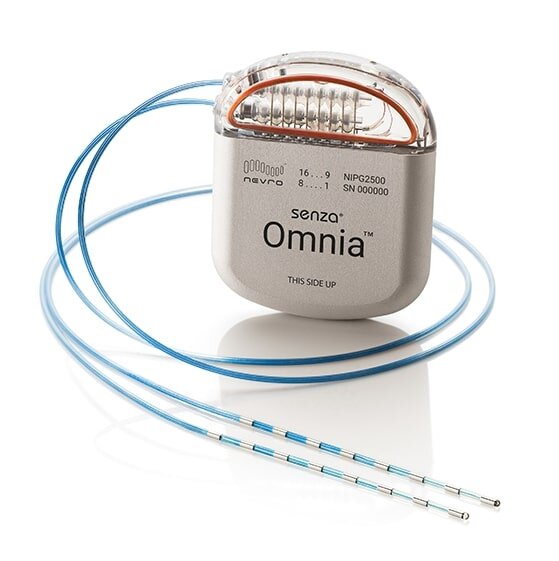Even as the government remains largely silent about its investigation, interviews with former Lags Medical patients and employees, as well as KHN analyses of reams of Medicare and Medi-Cal billing data and other court and government documents, suggest the clinics operated based on a markedly high-volume and unorthodox approach to pain management. This includes regularly performing skin biopsies that industry experts describe as out of the norm for pain specialists, as well as notably high rates of other sometimes painful procedures, including nerve ablations and high-end urine tests that screen for an extensive list of drugs.
Those procedures generated millions of dollars in insurer payments in recent years for Lags Medical Centers, an affiliated network of clinics under the ownership of Dr. Francis P. Lagattuta. The clinics’ patients primarily were insured by Medicare, the federally funded program for seniors and people with disabilities, or Medi-Cal, California’s Medicaid program for low-income residents.
Taken individually, the fees for each procedure are not eye-popping. But when performed at high volume, they add up to millions of dollars.
Take, for example, the punch biopsy, a medical procedure in which a circular blade is used to extract a sample of deep skin tissue the size of a pencil eraser. The technique is commonly used in dermatology to diagnose skin cancer but has limited use in pain management medicine, usually involving a referral to a neurologist, according to multiple experts interviewed. These experts said it would be unusual to use the procedure as part of routine pain management.
KHN used Medi-Cal records to assess the volume of services performed across the entire chain. But the state could not provide totals for how much Lags Medical was reimbursed because of California’s extensive use of managed-care plans, which do not make their reimbursement rates public. Where possible, KHN estimated the worth of Medi-Cal procedures based on the set rates Medi-Cal pays traditional fee-for-service plans, which are public.
Lags Medical clinics performed more than 22,000 punch biopsies on Medi-Cal patients from 2016 through 2019, according to state data. Medi-Cal reimbursement rates for punch biopsies changed over time. In 2019 the state’s reimbursement rate was more than $200 for a set of three biopsies performed on patients in fee-for-service plans.
Laboratory analysis of punch biopsies was worth far more. Lags Medical clinics sent biopsies to a Lags-affiliated lab co-located at a clinic in Santa Maria, according to medical records and employee interviews. From 2016 through 2019, Lags Medical clinics and providers performed tens of thousands of pathology services associated with the preparation and examination of tissue samples from Medi-Cal patients, according to state records. The services would have been worth an estimated $3.9 million using Medi-Cal’s average fee-for-service rates during that period.
In that same period, Medicare reimbursed Lagattuta at least $5.7 million for pathology activities using those same billing codes, federal data shows.
‘Assembly Line’ Pain Care
Much of the work at Lags Medical was performed by a relatively small number of nurse practitioners and physician assistants, each juggling dozens of patients a day with sporadic, often remote supervision by the medical doctors affiliated with the clinics, according to interviews with former employees. Lagattuta himself lived in Florida for more than a year while serving as medical director, according to testimony he provided as part of an ongoing malpractice lawsuit that names Lagattuta, Lags Medical, and a former employee as defendants.
Former employees said they were given bonuses if they treated more than 32 patients in a day, a strategy Lagattuta confirmed in his deposition in the malpractice lawsuit. “If they saw over, like, 32 patients, they would get, like, $10 a patient,” Lagattuta testified.
The lawsuit, filed in Fresno County Superior Court, accuses a Lags Medical provider in Fresno of puncturing a patient’s lung during a botched injection for back pain. Lagattuta and the other named defendants have denied the incident was due to negligent treatment, saying, in part, the patient consented to the procedure knowing it carried risks.
Hector Sanchez, the nurse practitioner who performed the injection and is named in the lawsuit, testified in his own deposition that providers at the Lags Medical clinic in Fresno each treated from 30 to 40 patients on a typical workday.
According to Sanchez’s testimony and interviews with two additional former employees, Lags Medical clinics also offered financial bonuses to encourage providers to perform certain medical procedures, including punch biopsies and various injections. “We were incentivized initially to do these things with cash bonuses,” said one former employee, who asked not to be named for fear of retribution. “There was a lot of pressure to get those done, to talk patients into getting these done.”
In his own deposition in the Fresno case, Lagattuta denied paying bonuses for specific medical procedures.
‘Injections, Injections, Injections’
Interviews with 17 former patients revealed common observations at Lags Medical clinics, such as crowded waiting rooms and an assembly-line environment. Many reported feeling pressure to consent to injections and other procedures or risk having their opioid supplies cut off.
Audrey Audelo Ramirez said she had worried for years that the care she was receiving at a Lags Medical clinic in Fresno was subpar. In the past couple of years, she said, there were sometimes so many patients waiting that the line wrapped around the building.
Ramirez, 52, suffers from trigeminal neuralgia, a rare nerve disease that sends shocks of pain across the face so severe it’s known as the “suicide disease.” Over the years, Lags Medical had taken over prescribing almost all her medications. This included not only the opioids and gabapentin she relies on to endure excruciating pain, but also drugs to treat depression, anxiety, and sleep issues.
Ramirez said she often felt pressured to get procedures she didn’t want. “They were always just pushing injections, injections, injections,” she said. She said staffers performed painful punch biopsies on her that resulted in an additional diagnosis of small fiber neuropathy, a nerve disorder that can cause stabbing pain.
She was among numerous patients who said they felt they needed to undergo the recommended procedures if they wanted continued prescriptions for their pain medications. “If you refuse any treatment they say they’re going to give you, you’re considered noncompliant and they stop your medication,” Ramirez said.
She said she eventually agreed to an injection in her face, which she said was administered without adequate sedation. “It was horrible, horrible,” she said. Still, she said, she kept going to the office because there weren’t many other options in her town.
Lagattuta, through his lawyer, declined a request from KHN to respond to questions about the care provided at his clinics, citing the state investigation. “Since there is an active investigation, Dr. Lagattuta cannot comment on it until it is completed,” attorney Matthew Brinegar wrote in an email. Lagattuta’s license remains in good standing, and he said in his deposition in the Fresno lawsuit that he is still seeing patients in California.
Experts interviewed by KHN noted that medical procedures such as injections can have a legitimate role in comprehensive pain management. But they also spoke in general terms about the emergence of a troubling pattern at U.S. pain clinics involving the overuse of procedures. In the 1990s and early 2000s, problematic pain clinics hooked patients on opioids, then demanded cash to continue prescriptions, said Dr. Theodore Parran, who is a professor of medicine at Case Western Reserve University and has served as an expert witness in federal investigations into pain clinics.
“What has replaced them are troubled pain clinics that hook patients with the meds and accept insurance, but overuse procedures which really pay well,” he said. For patients, he added, the consequences are not benign.
“I mean they are painful,” he said. “You’re putting needles into people.”
Cash Bonuses for Procedures
Before moving to California in 1998, Dr. Francis Lagattuta lived in Illinois and worked as a team doctor for the Chicago Bulls during its 1995-96 championship season. Out West, he opened a clinic in Santa Maria, a Latino-majority city along California’s Central Coast known for its strawberry fields, vineyards, and barbecue. From 2015 to 2020, the chain grew from a couple of clinics in Santa Barbara County to dozens throughout California, largely in rural areas, as well as far-flung locations in Washington state, Delaware, and Florida.
The California portion of the chain is organized as more than two dozen corporations and limited liability corporations owned by Lagattuta. His son, Francis P. Lagattuta II, was a manager for the company.













